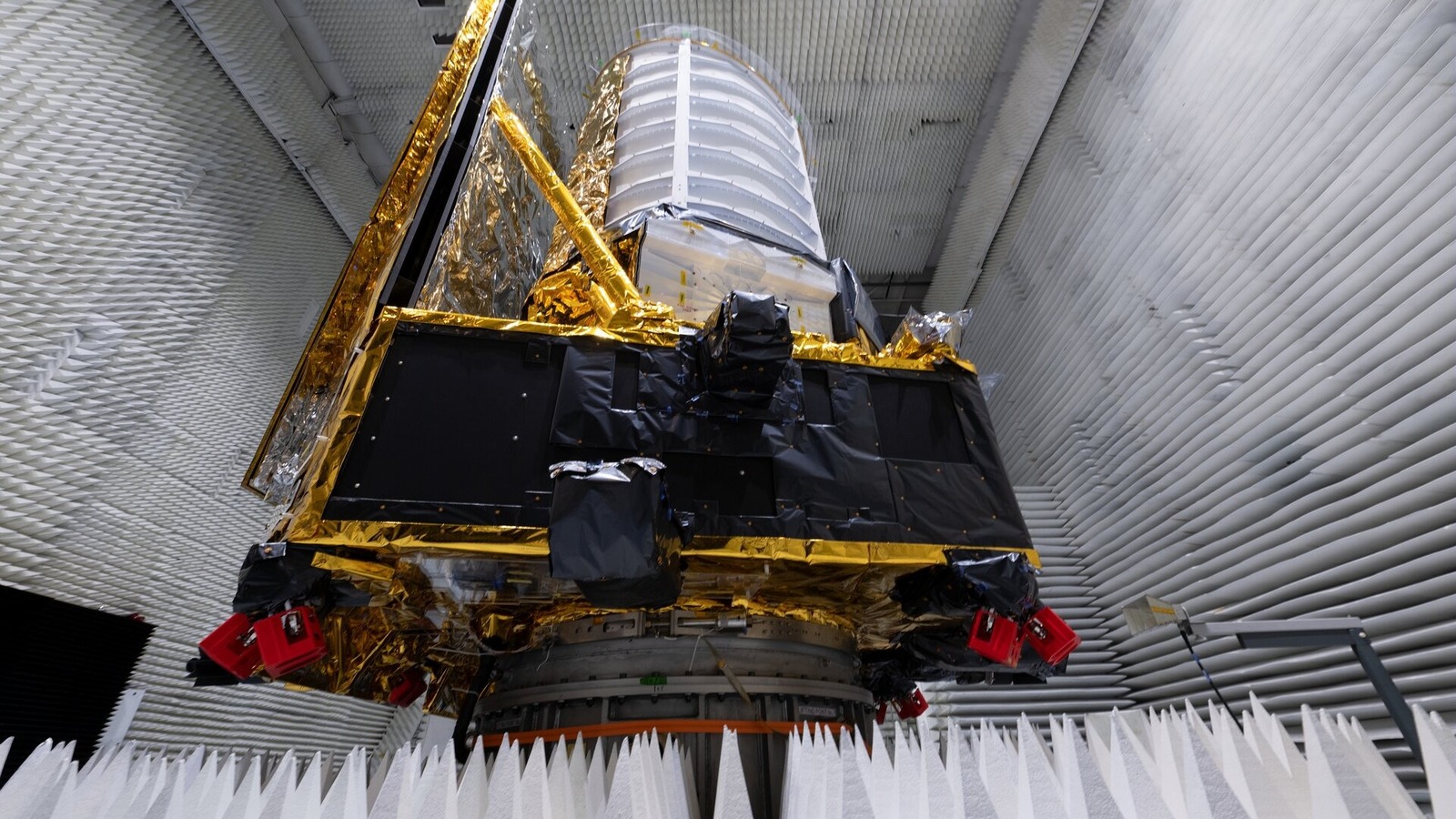
How The Euclid Telescope Is Set To Illuminate The Mysteries Of Dark Matter – SlashGear
Set for launch in July 2023, the European Space Agency’s Euclid telescope aims to investigate two of the strangest phenomena in astrophysics: dark matter and dark energy. Scientists know that all of the ordinary matter we see in the universe represents just 5% of everything that exists, while the rest is made up of two things we can’t detect directly and which we call dark matter and dark energy.
We know these things must exist because we can see their effects, like dark energy explaining the rate of expansion of the universe and dark matter explaining the movement of galaxies. But no one knows exactly what these forces or particles are. To understand more about them, we need to look at the universe on a very large scale. That way, we can see how mass is distributed throughout and between galaxies and also see how these galaxies are moving apart as the universe expands.
But to measure things on such a big scale, we need a special kind of telescope. That’s where Euclid comes in. This space-based telescope will look for the structure of the universe, called the cosmic web, and map it out. By seeing where galaxies are located, it can see how the expansion rate of the universe has changed over time, which is key to understanding dark energy. And by seeing where mass resides in galaxies that is not due to ordinary matter, it can detect the presence of dark matter.
The instruments on board Euclid
 CEA (Commissariat à l'énergie atomique et aux énergies alternatives)
CEA (Commissariat à l'énergie atomique et aux énergies alternatives)
To enable its investigation of dark matter, Euclid will have two primary scientific instruments. Firstly, the VISible instrument (VIS) will take images in the visible light wavelength, which is equivalent to what the human eye sees. These images will span large parts of the sky and be very sharp, allowing scientists to pick out the light from over a billion galaxies. The instrument will work across wavelengths from green light (550 nanometers) up to near-infrared (900 nanometers) and will take images with a total of around 600 megapixels, which is the equivalent of seventy 4K televisions all put together.
The reason that VIS needs to see with high resolution and a large field of view is so that researchers can get an accurate view of distant galaxies. Then they can look at how these galaxies are arranged within the universe, they can see how the expansion of the universe affects them. Euclid’s second instrument is a spectrometer called Near-Infrared Spectrometer and Photometer (NISP). A spectrometer works by taking in light and breaking it down into different wavelengths, then seeing which wavelengths are present or absent because they have been absorbed.
Looking at the spectra of galaxies helps astronomers measure their redshift, which means the amount that light is shifted toward the red end of the spectrum. That is important because it tells scientists how fast those galaxies are moving away from us, which again gives information about the expansion of the universe.
Making a map of the universe
To understand the effects of dark matter and dark energy, Euclid will make a map of the universe, showing its structure on a large scale. It will observe billions of galaxies, including those up to 10 billion light-years away, covering more than one-third of the night sky. By looking at these very distant galaxies, Euclid will effectively be looking back in time. That’s because light takes time to travel, so when we see a distant galaxy we are actually seeing it as it was long ago when the light left it. This allows Euclid to get a view through time back to some of the earlier stages of the universe.
And as Euclid will be in space, it will be able to see distant galaxies more accurately than it could if it were on the ground. That’s because of Earth’s atmosphere and in particular the water vapor in the atmosphere, which interferes with readings and causes noise in the data. Without the atmosphere blocking the view, Euclid will be able to see these very distant galaxies.
Getting a big-picture view of the universe could even help elucidate one of the fundamental forces of the universe: gravity. We know that general relativity describes gravity as the bending of spacetime by mass, and this has been proven on many smaller scales. But Euclid will be able to see if this description still works when applied on a much bigger scale, or if our understanding of gravity needs to be further refined.































![iFi's GO Bar Kensei Dongle DAC Supports K2HD Technology With Some Samurai Swagger [Updated] iFi's GO Bar Kensei Dongle DAC Supports K2HD Technology With Some Samurai Swagger [Updated]](https://i0.wp.com/cdn.ecoustics.com/db0/wblob/17BA35E873D594/33FF/45A11/QTXOLJR4xDKSNMMk2WlTgjaIlvSgcYpeU1xJzUwIoYs/ifi-go-bar-kensei.jpg?w=768&ssl=1)

























